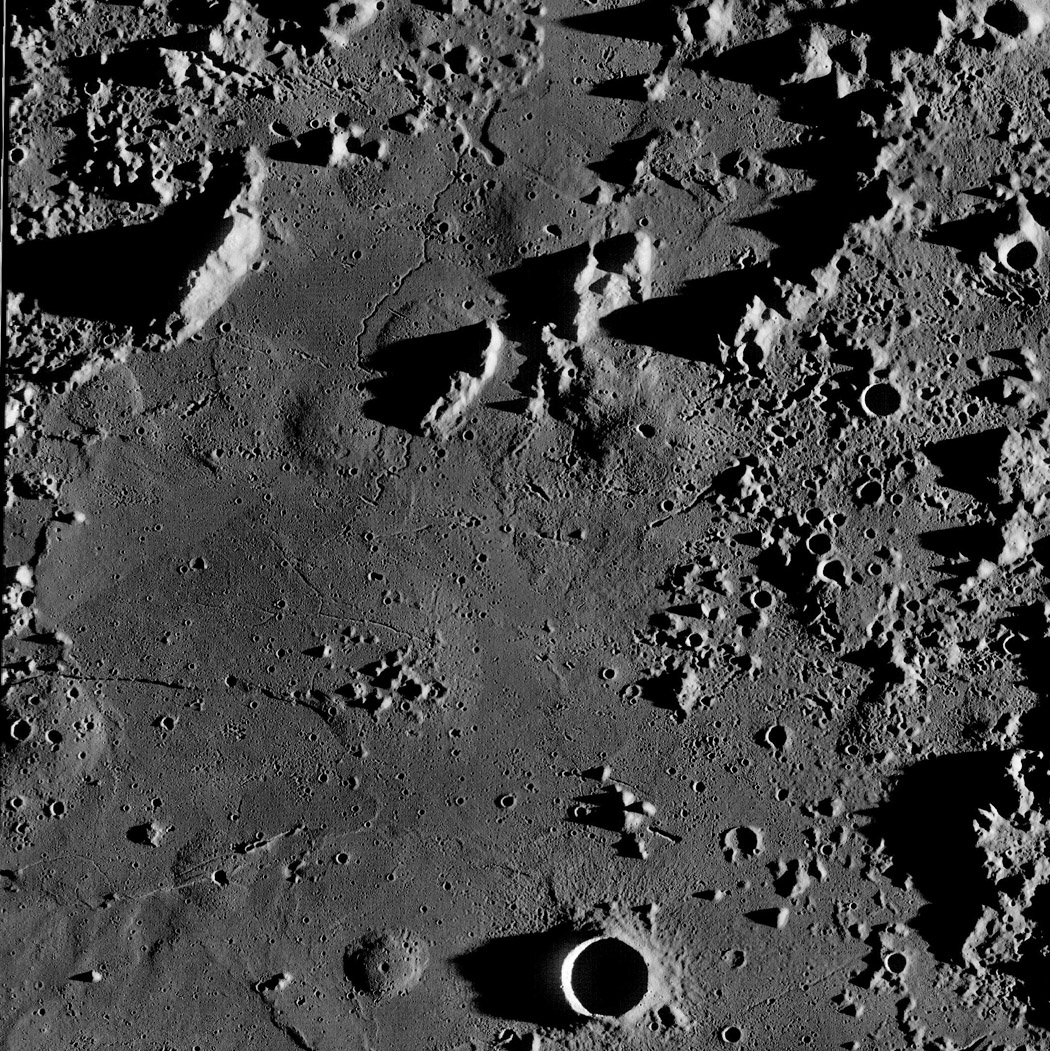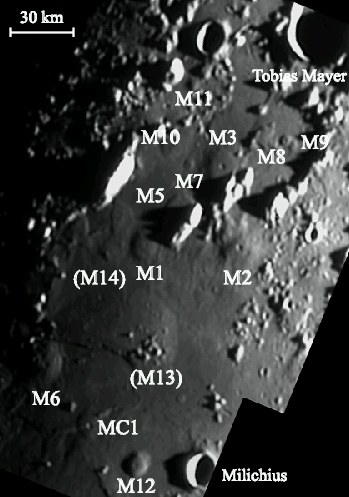April 30, 2022
Why the Rille Turned
Originally published June 15, 2012

LRO low sun mosaic processed by Maurice Collins, New Zealand
 |
When I saw this latest mosaic (above) from Maurice I remembered what Gerard Kuiper wrote 45 years ago on page 1 of the booklet accompanying the Consolidated Lunar Atlas. He said that the 20 m resolution Lunar Orbiter V frame M-165 showed the T. Mayer Rille make a "major, but otherwise incomprensible" bend to the east. But as Kuiper pointed out the very low sun view on plate D20 of the Atlas showed why the rille changed direction - it flowed around a low dome (M1) not visible on the LO view. Kuiper concluded that a large range on sun angles was necessary to interpet the lunar surface. Amen. The LRO mosaic above makes me long once again for a low sun global map of the entire Moon (and a full Moon view too). When Maurice makes mosaics he often runs into places where there are not yet low sun views, so we don't yet have the range of images Kuiper wanted. Here are some comments about features show above. The small image at left, from the valuable GLR Consolidated Lunar Dome Catalog, provides nomenclature for the domes. The T. Mayer Rille starts in a t-bone shaped rimless depression, a variant of those seen in the Prinz Rilles. Dome M12 to the west of Milichius appears to be made of two different eruptions. The bottom lava platform seems surmounted by a rounder extrusion of lava. Finally, the large swell (M13) is reminiscent of the Valentine Dome, even being cut by long fault. Kuiper pointed out this swell, calling it a very large shield-like uplift. Finally, I can't help but noticing how good the telescopic image at left is!
Yesterday's LPOD: Ridged Mystery Tomorrow's LPOD: Overdue Names COMMENTS?Register, Log in, and join in the comments.
|



